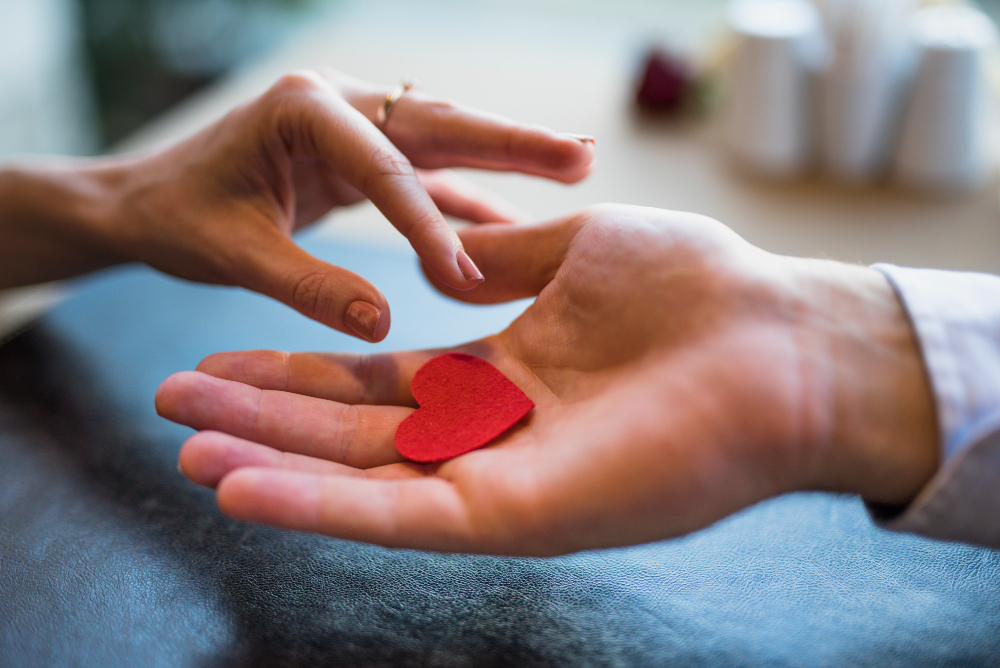When it comes to love, your past can quietly shape your present—especially if it’s filled with heartbreak, betrayal, or emotional neglect. Unhealed wounds from previous relationships don’t just disappear; they often resurface in new connections, affecting your self-worth, trust, and emotional availability.
Have you ever found yourself overreacting to small things, pulling away when someone gets close, or chasing unavailable partners? These patterns often trace back to old emotional injuries that haven’t been fully processed.
This blog will help you understand how unresolved hurt from the past may be influencing your dating life—and more importantly, how you can begin the healing process. With self-awareness, intention, and compassion, you can break free from patterns that no longer serve you and open your heart to healthier, more fulfilling love.
1. Identify Emotional Triggers
The first step to healing is recognizing the moments that activate unresolved pain. Triggers are emotional reactions—often disproportionate to the situation—that point to deeper wounds. For example, feeling panic when a partner doesn’t text back may reflect abandonment trauma, not just modern dating anxiety.
Pay attention to moments when you feel rejected, anxious, or angry. Instead of blaming your partner or shutting down, ask yourself: “What does this remind me of?” or “When did I first feel this way?”
Keeping a trigger journal can help you track patterns. Over time, you’ll start to see connections between past experiences and present reactions—and that insight is the start of emotional freedom.
2. Recognize Repeating Patterns
Do you find yourself dating the same “type” over and over, even when it leads to pain? Do your relationships always end the same way? These are signs of subconscious patterns rooted in past wounds.
You might be unconsciously attracted to people who reflect early relationship dynamics—like emotionally distant partners that mimic a parent who was hard to please. Familiarity can feel like chemistry, even when it’s unhealthy.
Break the cycle by noticing what you’ve normalized. What red flags have you ignored? What green flags have you rejected? Awareness is the first step to choosing differently and creating space for new, healthy dynamics.
3. Understand Emotional Avoidance
Some people respond to past pain by shutting down emotionally. You might avoid vulnerability, push people away, or keep connections shallow to protect yourself from being hurt again.
While this self-protection is understandable, it often prevents true intimacy. Healing means learning to tolerate emotional discomfort—like being seen, heard, and emotionally open.
Start small. Share something vulnerable. Stay present when a difficult emotion arises. Remind yourself: You’re not in the same situation as before. You have tools, boundaries, and the wisdom of your experiences now.
4. Rebuild Self-Worth
Heartbreak and trauma can leave you questioning your value. Maybe you feel unlovable, not enough, or afraid that love always ends in pain. These beliefs form an emotional undercurrent that shapes your dating choices.
Healing means reestablishing your worth—not because someone chooses you, but because you’ve chosen yourself. Practice self-compassion, set boundaries that honor your value, and surround yourself with supportive people.
Journaling, therapy, and affirmations like “I am worthy of healthy, joyful love” can help rewire your internal dialogue and rebuild a foundation of self-trust.
5. Shift from Reaction to Intention
When you’re stuck in past pain, dating often becomes reactive: you run, cling, overthink, or shut down based on fear. Healing invites you to shift into intention—where you choose partners and responses aligned with your values, not your wounds.
Ask yourself: What kind of relationship do I truly want? Who do I want to be in love? These questions empower you to act from clarity instead of emotional reflex.
Intentional dating means slowing down, reflecting after dates, and checking in with your body and intuition. It’s less about finding “the one” and more about becoming the healthiest version of yourself.
6. Seek Support and Resources
Healing your heart doesn’t have to be a solo journey. Support from coaches, therapists, or trusted friends can accelerate your progress and offer perspective when you feel stuck.
Join a group program, read books on attachment or trauma healing, or work with a relationship coach. Tools like guided meditations, emotional release techniques, and journaling prompts can help release emotional baggage and create space for new love.
Above all, give yourself grace. Healing is not linear—it’s a winding path of progress, pause, and breakthroughs. But with each step, you become more open, whole, and ready to receive love without fear.
Past wounds don’t have to define your future. When you choose to heal, you reclaim your power—not just in dating, but in every area of your life. You deserve a love that feels safe, aligned, and nourishing—and it starts with the relationship you build with yourself.
Ready to break free from past pain and build a healthier path forward? Our programs, courses, and coaching services are designed to guide you through the healing process with clarity and care.
👉 Visit DatingAndRelationshipSuccess.com to access our free resource, “Heal & Attract: 5 Steps to Release Emotional Baggage and Call in Real Love.”

